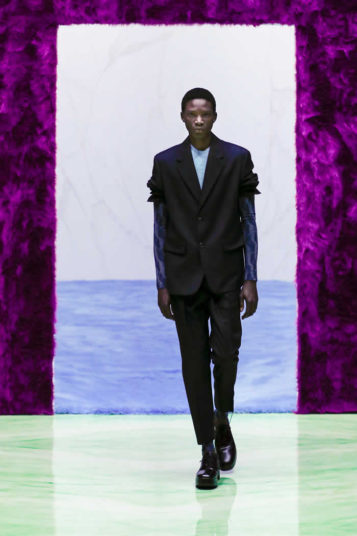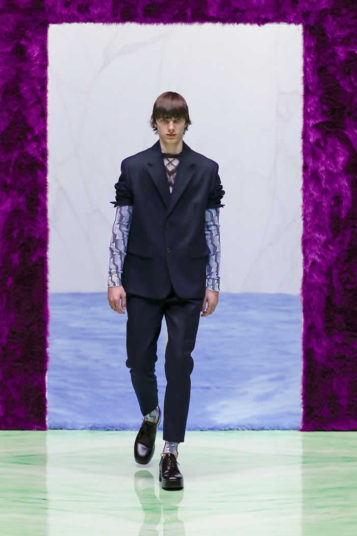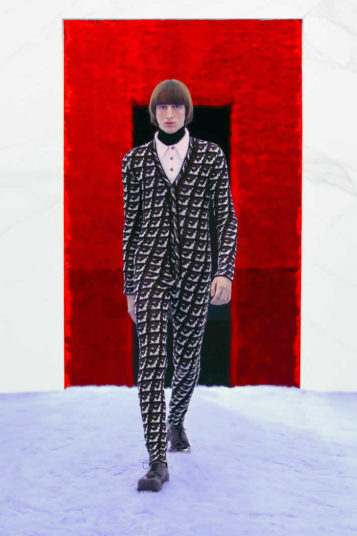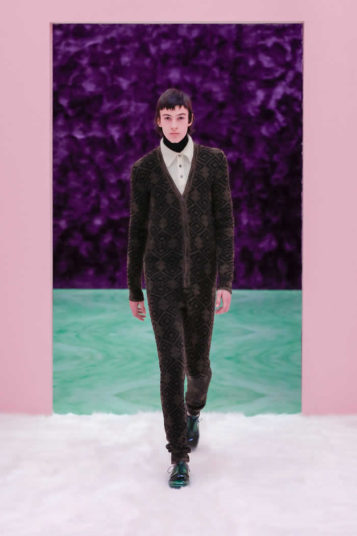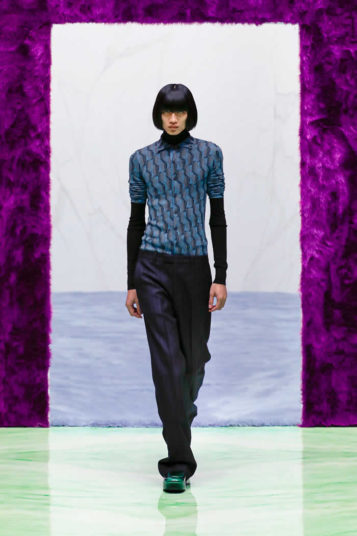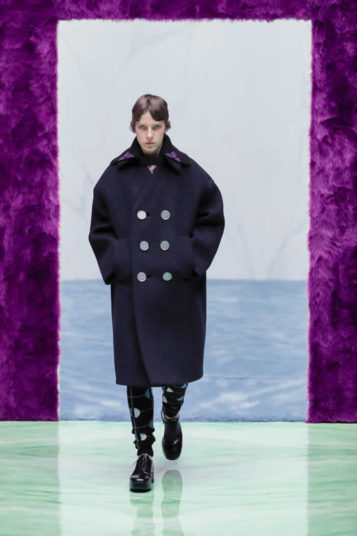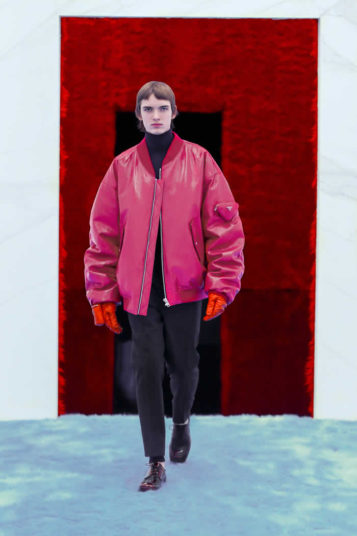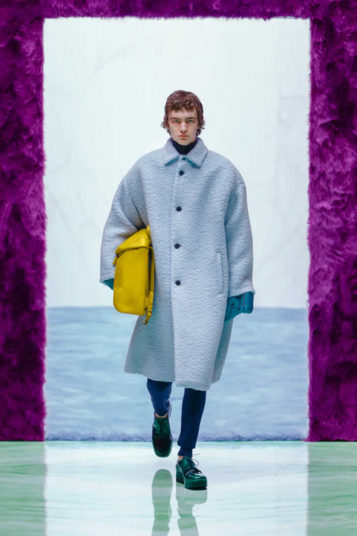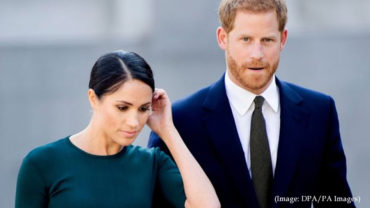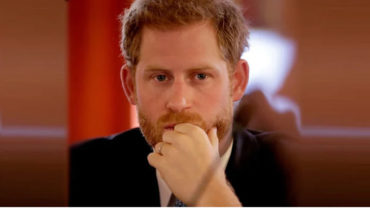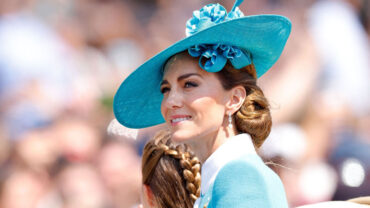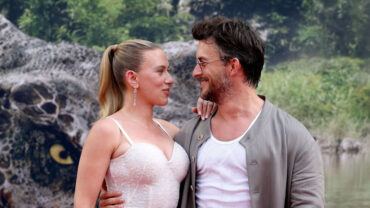That was one significant departure for this first co-creatively directed menswear collection authored by the two: in staging, setting, music, decoration and more, past Prada shows have often featured reverse-engineered clues and obliquely telling easter eggs that allow a reading to unfold.
Today instead we saw a menswear collection dominated by a garment that acted as a single motif that could, depending on your feeling, be worn, felt and seen in multiple ways. That garment was a knit patterned long john. Above the foundation of the model wearing it, a long john was the cladding upon which every look in the show was constructed (although sometimes that look went unadorned, all-long john).
No one long john was the same; the patterns were sometimes art deco, sometimes adapted argyle, sometimes something else. Necklines varied from turtle to V to polo to round; yarns and ply spanned mohair, fine-gauge, Shetland and more. Simons said: “We started talking very early on about what kind of piece could represent something very close to the body, literally being almost a representation of the body.
We were looking for something that could be maybe a symbolic piece for all these kinds of feelings that we feel right now.” Their conclusion was what both designers called the “body piece” but which, Simons expanded, could be seen as a childish romper suit, or something more masculine like a long john. “Sexual cowboy in a saloon,” he said. (Prada later laughingly added that “cowboy” hadn’t been in her mental lookbook and that she saw the garment’s “rock ’n’ roll” relevance.)
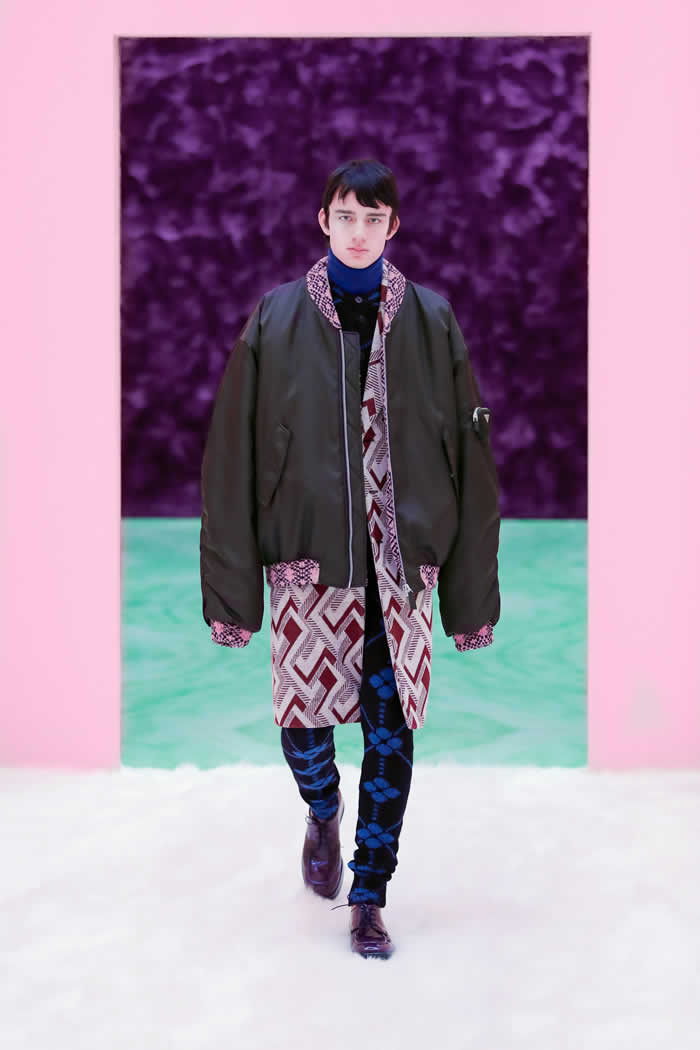
This ambiguity was the point of a garment you could feel different emotional perspectives about, which you would physically feel all over, and which would reveal the architecture of the body while also completely insulating it. Above this collection-wide foundation Prada and Simons built various satisfying superstructures.
These included sleeve-hoiked suiting, sometimes in pinstripe (a former Mrs. Prada no-no that Simons had charmed her into permitting), oversized re-nylon parkas with jacquard linings, similarly lined and rib-hemmed oversized bombers, topcoats in boucle, brushed teddy bear and diagonal wale, long john coordinated knit jackets, and high-collared, lapel-less peacoats. Some of the parkas and bombers featured Prada hardware logos at the top of the spine—a Margiela-expert acquaintance suggested this might be a hat tip—and many of the looks were accessorized by pandemic-perfect leather gloves featuring attached purselets.
When not black or almost so, the color story played against the tones of a zingy faux fur interior that had been fashioned by Rem Koolhaas and AMO. The abundant tactility of this interior architecture spoke directly to that of the exterior architecture of those “body pieces”—textures designed to be felt both emotionally and physically.
Some questions post-show were intended to reveal the texture of the designers’ own feelings, both about working collaboratively, and about working in this very particular now. Simons noted that despite intimations of a post-vaccine flowering ahead: “We don’t feel it’s right, now, to be too exuberant.” But, he added, “I do not feel limited in designing what we want to design.” Sitting at a responsible distance alongside him, Prada concurred: “Thank God we can keep doing what we like.”


